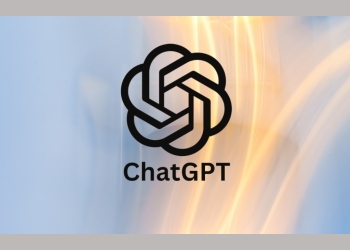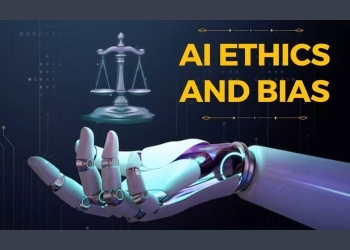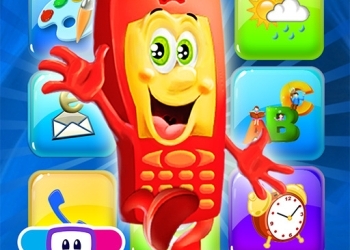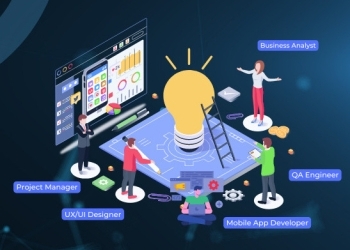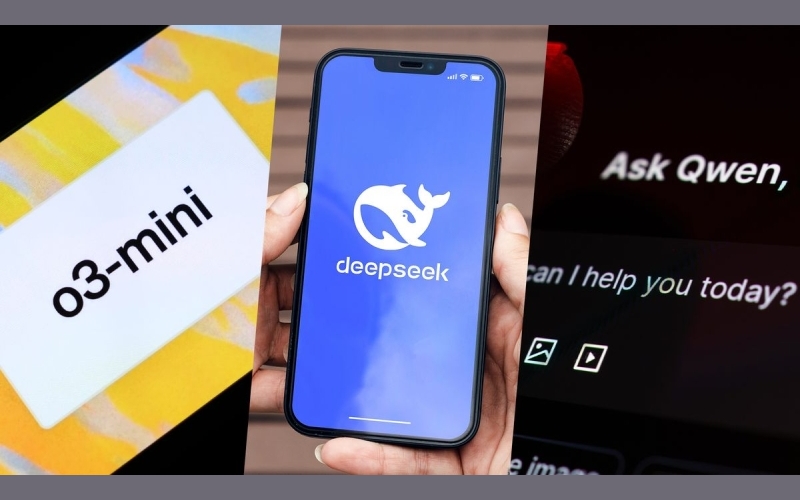
In the rapidly evolving world of artificial intelligence, generative AI tools have emerged as transformative forces across industries, reshaping how we approach creativity, problem-solving, and decision-making. While OpenAI's ChatGPT has undeniably captured much of the spotlight with its groundbreaking capabilities in natural language processing (NLP) and conversational fluency, a vibrant ecosystem of alternative generative AI tools is now challenging traditional norms and offering unique value propositions that push the boundaries of what these systems can achieve. From multimodal innovations to open-source accessibility, this burgeoning landscape extends far beyond ChatGPT, presenting opportunities for exploration, customization, and innovation.
This article delves into these alternatives—exploring their importance, similarities, strengths, pricing models, user accessibility, and more—to provide an exhaustive overview of the dynamic and diverse realm of generative AI. By highlighting tools such as Google Gemini, Anthropic Claude, Meta Llama 2, Amazon Bedrock, Stability AI’s Stable Diffusion, Hugging Face Transformers, Qwen 2.5 , and DeepSeek R1 , we aim to paint a comprehensive picture of the current state of generative AI and its potential future.
Why Explore Beyond ChatGPT?
ChatGPT is undoubtedly one of the most advanced NLP models available today. Its ability to generate human-like responses, engage in complex conversations, and adapt seamlessly to various tasks has made it a go-to choice for developers, businesses, and individuals alike. However, relying exclusively on a single tool can stifle innovation and limit exploration. The rise of alternative generative AI tools offers users access to a broader range of functionalities, specialized features, and competitive advantages tailored to specific needs.
Moreover, diversifying your toolkit allows you to harness different architectures, training datasets, and philosophical approaches behind each model. This diversity not only fosters creativity and enhances productivity but also ensures that no single entity monopolizes the AI ecosystem—a critical consideration in maintaining ethical standards, promoting transparency, and fostering fair competition. For instance, tools like Qwen 2.5 bring multilingual mastery and code generation prowess to the table, while DeepSeek R1 prioritizes transparency and reproducibility, empowering researchers and developers the same. Similarly, models like Stable Diffusion excel in visual creativity, and Llama 2 provides unparalleled flexibility through its open-source nature.
By embracing this rich tapestry of options, users can unlock new possibilities, tailor solutions to their unique requirements, and stay ahead of the curve in an ever-evolving technological landscape. Whether you're building the next big application, advancing scientific discovery, or simply experimenting with creative ideas, the generative AI space offers something for everyone—and the journey is just beginning.
Key Players in the Generative AI Landscape
Here’s a comprehensive look at some of the leading alternative generative AI tools currently making waves:
1. Qwen 2.5: The Versatile Open-Source Powerhouse
Overview:
Qwen 2.5 is a cutting-edge large language model developed by Alibaba Cloud, designed to excel across a wide range of tasks, from natural language understanding and generation to code writing and multi-modal reasoning. It builds upon the strengths of its predecessors while incorporating advancements in efficiency, scalability, and user-friendliness.
Importance:
As an open-source solution, Qwen 2.5 democratizes access to state-of-the-art AI capabilities, empowering developers, researchers, and businesses worldwide to innovate without barriers. Its multilingual support further solidifies its role as a global tool capable of addressing diverse linguistic needs.
Similarities with ChatGPT:
Both Qwen 2.5 and ChatGPT leverage transformer architectures to deliver coherent, context-aware responses. They also share proficiency in handling complex queries and generating high-quality content.
What It’s Better At:
Multilingual Mastery : With extensive training on data spanning over 100 languages, Qwen 2.5 outperforms many competitors in cross-cultural applications.
Code Generation : Equipped with advanced coding abilities, Qwen 2.5 can assist programmers in writing efficient, bug-free code across multiple programming languages.
Scalability : Optimized for deployment in resource-constrained environments, Qwen 2.5 ensures smooth performance even on lightweight devices.
Community Support : A vibrant ecosystem of contributors continuously improves the model, ensuring it stays at the forefront of innovation.
Pricing & Accessibility:
Qwen 2.5 is available free of charge under an open-source license, allowing unrestricted use for personal and commercial purposes. Additionally, Alibaba Cloud provides hosted versions through its platform, offering flexible pricing plans starting at $0.005 per token.
Creative Potential:
Imagine leveraging Qwen 2.5 to build multilingual chatbots, automate software development pipelines, or create educational resources tailored to regional audiences—all while keeping costs low thanks to its open-source nature.
2: DeepSeek R1: The Researcher’s Dream
Overview:
DeepSeek R1 is a family of large language models created by DeepSeek, focusing on delivering exceptional performance in research and academic settings. Known for their transparency and reproducibility, these models serve as valuable tools for scientists, engineers, and scholars exploring the boundaries of AI.
Importance:
DeepSeek R1 bridges the gap between theoretical knowledge and practical application by providing open-access models accompanied by detailed documentation and benchmarks. This fosters collaboration, accelerates discovery, and promotes ethical AI practices.
Similarities with ChatGPT:
Like ChatGPT, DeepSeek R1 excels in generating fluent, contextually relevant text suitable for various applications, including content creation, summarization, and question-answering.
What It’s Better At:
Transparency : DeepSeek prioritizes openness by sharing training methodologies, evaluation metrics, and source code, enabling users to verify results and build trust.
Customization : Researchers can fine-tune DeepSeek R1 models to suit specific domains, such as bioinformatics, climate modeling, or social sciences.
Performance Optimization : Engineered for speed and accuracy, DeepSeek R1 delivers faster inference times and lower latency compared to some alternatives.
Ethical Considerations : Built with fairness and bias reduction in mind, DeepSeek R1 minimizes unwanted biases, promoting equitable outcomes.
Pricing & Accessibility:
DeepSeek R1 is freely accessible under an open-source license, encouraging widespread adoption and experimentation. Commercial licenses are also available for organizations requiring additional support or specialized features.
Use Cases:
Leverage DeepSeek R1 to conduct groundbreaking studies, develop novel algorithms, or prototype innovative solutions—all while maintaining full control over the underlying technology.
Here’s how Qwen 2.5 and DeepSeek R1 stack up against other leading generative AI tools:
Qwen 2.5
Best At: Multilingual support, code gen
Weak Points: Less focus on niche modalities
Pricing Model: Free/open-source
DeepSeek R1
Best At: Transparency, customization
Weak Points: May require domain expertise
Pricing Model: Free/open-source
ChatGPT
Best At: Conversational fluency
Weak Points: Limited multimodality support
Pricing Model: Subscription-based
Gemini
Best At: Multimodal generation
Weak Points: Still in development phase
Pricing Model: Tiered subscriptions
Claude
Best At: Safety & compliance
Weak Points: Higher costs
Pricing Model: Pay-per-token
Llama 2
Best At: Customizability
Weak Points: Requires technical expertise
Pricing Model: Free
Bedrock
Best At: Integration with AWS
Weak Points: Tied to AWS ecosystem
Pricing Model: Pay-as-you-go
Stable Diffusion
Best At: Visual creativity
Weak Points: Not optimized for text
Pricing Model: Freemium
Transformers
Best At: Versatility
Weak Points: Fragmented user experience
Pricing Model: Mostly free
Why Choose Qwen 2.5 or DeepSeek R1?
Both Qwen 2.5 and DeepSeek R1 bring distinct advantages to the table, making them compelling choices depending on your needs:
- If you’re looking for a versatile, multilingual model with strong coding capabilities and community backing, Qwen 2.5 is an excellent option.
- For researchers seeking transparent, customizable models ideal for scientific exploration, DeepSeek R1 stands out as a top contender.
By incorporating these powerful tools into your workflow, you gain access to capabilities rivaling—if not surpassing—those offered by proprietary solutions like ChatGPT. Plus, their open-source status ensures long-term sustainability and adaptability to evolving demands.
3. Google Gemini
Overview : Developed by Google DeepMind, Gemini represents a leap forward in multi-modal learning, combining text, image, audio, and video generation capabilities into a unified framework.
Importance : As a versatile tool, Gemini excels in cross-domain applications such as content creation, multimedia analysis, and interactive storytelling.
Similarities with ChatGPT : Both models share strong foundations in transformer architecture but differ significantly in scope and specialization.
What It’s Better At : Gemini shines in handling multimodal inputs/outputs, making it ideal for projects requiring seamless integration of text and visuals or generating rich media assets like videos.
Pricing & Accessibility : Currently in beta testing, Gemini offers tiered subscription plans starting from $20/month for basic usage up to enterprise-level solutions priced individually based on requirements.
Creative Potential : Imagine crafting immersive virtual experiences where every element—from dialogue to animations—is generated dynamically using Gemini!
4. Anthropic Claude
Overview : Created by Anthropic, Claude stands out for its focus on safety, reliability, and fine-tuned control over outputs.
Importance : Ideal for enterprises prioritizing compliance, security, and consistent performance without compromising quality.
Similarities with ChatGPT : Like ChatGPT, Claude boasts robust conversational skills and supports multiple languages.
What It’s Better At : Security protocols, customizable filters, and enhanced explainability make Claude particularly attractive for regulated industries like healthcare, finance, and legal services.
Pricing & Accessibility : Starts at $0.01 per token for standard queries, scaling upward depending on volume and complexity. Free trials are available for new users.
Use Cases : Use Claude to build secure chatbots for customer support systems or automate document reviews while ensuring adherence to industry regulations.
5. Meta Llama 2
Overview : Meta’s open-source offering, Llama 2, provides state-of-the-art language modeling capabilities accessible to anyone.
Importance : Empowering developers worldwide through free availability under a permissive license fosters democratization of AI technology.
Similarities with ChatGPT : Comparable performance metrics in terms of contextual understanding and coherence.
What It’s Better At : Being open source, Llama 2 enables customization, experimentation, and deployment across diverse platforms without licensing restrictions.
Pricing & Accessibility : Completely free to download and use! However, hosting costs may apply if deploying on cloud infrastructure.
Community Engagement : A thriving developer community contributes plugins, extensions, and tutorials, expanding Llama 2’s utility exponentially.
6. Amazon Bedrock
Overview : Amazon Web Services (AWS) introduced Bedrock as part of its suite of generative AI services, featuring pre-trained models from well-known providers including AI21 Labs and Stability AI.
Importance : Integrates seamlessly with AWS ecosystem, simplifying workflows for existing customers who rely heavily on cloud computing resources.
Similarities with ChatGPT : Delivers high-quality text generation suitable for business communications, marketing materials, and technical documentation.
What It’s Better At : Scalability and interoperability within AWS environments ensure smooth scaling alongside growing demands.
Pricing & Accessibility : Pay-as-you-go model charges per request ($0.0001/request), making it cost-effective for startups and large corporations alike.
Enterprise Readiness : Leverage Bedrock to power internal knowledge bases, automate report generation, or enhance e-commerce platforms with personalized recommendations.
7. Stability AI’s Stable Diffusion
Overview : Focused primarily on image synthesis, Stable Diffusion generates stunning visuals from textual descriptions, rivaling DALL·E in artistic flair.
Importance : Revolutionizes visual arts, advertising, gaming, and UI/UX design sectors by automating creative processes traditionally done manually.
Similarities with ChatGPT : Although predominantly visual-oriented, Stable Diffusion complements NLP models by providing complementary outputs.
What It’s Better At : Producing photorealistic images, intricate patterns, and surreal compositions unmatched by competitors.
Pricing & Accessibility : Basic version available freely via GitHub repository; commercial licenses start at $99/month for extended permissions.
Artistic Exploration : Unlock endless possibilities by blending words and pictures effortlessly—perfect for illustrators, filmmakers, and digital artists seeking inspiration.
8. Hugging Face Transformers
Overview : Hugging Face offers a vast library of pre-trained transformer-based models covering numerous domains, including NLP, computer vision, and speech recognition.
Importance : Acts as a hub connecting researchers, practitioners, and enthusiasts globally, promoting collaboration and knowledge sharing.
Similarities with ChatGPT : Many models included resemble ChatGPT in functionality yet vary slightly due to distinct architectures or datasets used during training.
What It’s Better At : Flexibility to choose exactly what you need—whether it’s sentiment analysis, translation, summarization, or question-answering tasks.
Pricing & Accessibility : Predominantly free-to-use, though premium offerings exist for enhanced support and exclusive features.
Educational Value : Perfect for students learning about deep learning concepts since hands-on practice becomes accessible instantly.
Final Thoughts
The generative AI landscape continues to expand, driven by relentless innovation and collaboration among developers worldwide. While ChatGPT remains a dominant force, alternative tools like Qwen 2.5, DeepSeek R1, and others offer equally exciting opportunities to push the envelope further. By embracing diversity in our AI toolkit, we unlock new possibilities, foster creativity, and pave the way for a brighter, more inclusive future.
So whether you’re building the next big app, advancing scientific frontiers, or simply experimenting with creative ideas, there’s no shortage of options to choose from. And remember—you don’t have to pick just one; combining forces often yields the best results!



